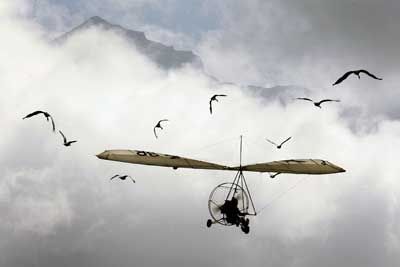
Watching a mudskipper clumsily go about its terrestrial business, you'd be forgiven for assuming this was its first day on the planet. These fish spend a lot of their lives squirming and squiggling around outside the water, breathing through their skins and holding water in their mouths and gill chambers. And though their movements might appear random and ungainly, mudskippers are dexterous enough to climb trees, and have no problem dragging themselves around by their pectoral fins in sand, mud, or over slimy rocks. For these reasons, they make great study subjects for researchers trying to figure out just how the first vertebrates hoisted themselves out of the sea roughly 360 million years ago.
A recent paper in the journal Science explores the intersection of biology and physics and makes a pit stop at robotics. In doing so, the researchers came up with a hypothesis to explain how animals who were used to swimming in the warm Devonian oceans managed to scramble around on complex materials like sand and mud as they made forays onto land.
Advertisement

"We started working on some problems a few years back on how little hatchling sea turtles manage to scoot down a beach at multiple body lengths per second," says Dan Goldman, an associate professor in the Georgia Tech School of Physics. "It got me wondering about how complicated the locomotor apparatuses of the first vertebrate land animals must have been. What sort of abilities might they have had while they transitioned to a fully terrestrial lifestyle?"
Over the past two decades, robots have become relatively easy and inexpensive to make, which means scientists studying the movement of animals can now make a physical model of an animal, program in the important aspects of their movement, and then put them in different scenarios. For this project, the research team realized the mudskipper, an animal that spends much of its life on land, but whose limbs and appendages aren't the most sophisticated for walking — to put it politely — was probably as close as they could get in anatomy and behavior to the first land vertebrates and our distant ancestors.
The research team observed live mudskippers and created mathematical and robotic physical models to assess how an early land lubber would have fared moving in different substrates like gravel, sand, or mud, all of which can be tricky in their own ways — check out the Georgia Tech video at the top of this article explaining the whole process. Based on what they learned from the mudskippers, the prehistoric landlubbers probably relied heavily on their tails to push them forward, compensating for any missteps they made with their front flippers or fins.
"Biomechanical models are usually done on rigid ground," says Goldman. "We argue that the earliest substrates animals had to move over were probably granular or flowable, which are more difficult to maneuver, especially as the slope increases. The interesting thing we found in both the robot and the mathematical models is that, while it's obvious mudskippers use their tails to propel themselves over land, we discovered they use them in a very controlled way, which help erase the mistake if they didn't flatten their fin in just the right way."
And, sure, this research helps us look to the distant past to understand how the first land animals moved, but it can also help us move toward our future to build robots that can maneuver out in the world — or even on other worlds.
"This intersection of biology, robophysics and mathematics is new and now even more accessible," says Goldman. "Robots are still pretty primitive in their ability to move over complex ground. We're now looking at the salamander, and how the presence of extra limbs and the ability to bend the back helps or hurts locomotor performance. This could allow people to develop more sophisticated robots that can move in more realistic environments."
Advertisement

